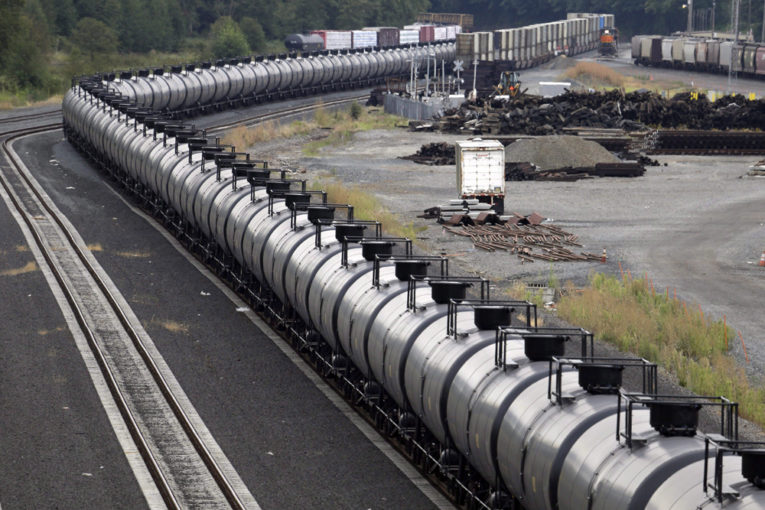
CALGARY – Canadian shipments of oil via rail have hit an all-time record high, and analysts expect shipments to go higher amid a pipeline crunch.
New data from the National Energy Board shows Canadian oil companies shipped an average of 198,788 barrels of oil per day on railway cars in May, the latest month for which data is available, marking a record high and a 42 per cent increase over the 130,916 bpd shipped on rail in the same month a year earlier. Over the same period, Canadian oil production is expected to have risen to 4.5 million bpd, from 3.9 million bpd according to an NEB forecast.
The dramatic increase has come as new pipelines have been delayed and operators are rationing space on existing pipelines as more oil is being produced in Western Canada than can fit into the country’s current pipe network.
“The pipelines remained constrained,” IHS Markit vice-president, North American crude oil markets Kevin Birn said, adding that the ramp up in crude oil by rail shipments is expected to continue. IHS Markit has estimated Canadian producers would ship between 200,000 bpd and 300,000 bpd on railway cars this year.
Last week, a handful of major Canadian oil companies indicated that they were working to secure more rail terminal capacity amid the pipeline shortage.
“When I talk about rail, I’m really thinking about something that is material and structural,” Cenovus Energy Inc. president and CEO Alex Pourbaix said on his company’s earnings call last week. He added that Cenovus would add more railway cars and aims to ship between 50,000 bpd to 60,000 bpd.
Pourbaix said Cenovus was increasing rail shipments at a measured pace because striking a deal for railway capacity “is a very, very complex transaction.”
“It isn’t quite as easy as just getting a deal done with the rail companies. To do it on that kind of a scale requires further car leasing, tank leases, liability management,” he said. “We’re talking about a very material commitment and from my perspective, it is important that we do this on an urgent basis, but it is way more important that we get it right rather than we get it done quickly.”
Similarly, Imperial Oil Ltd. president and CEO Rich Kruger said during an earnings call that one of his company’s priorities was to send more oil on railway cars from the company’s operations in Alberta to the U.S. Gulf Coast, which he described as the highest value market for heavy oil.
In previous years, Imperial considered rail access as “an insurance policy” in case new pipelines weren’t built, but the company has been using that insurance policy more frequently.
“We’ve ramped that up to closer to about 100,000 barrels a day of its capacity now,” Kruger said, adding the company intends to ship about 125,000 bpd in the second half of the year. It has the capacity to move 210,000 bpd at its own oil-by-rail facilities.
In a March report, the International Energy Agency estimated that Canadian oil-by-rail exports would grow to an average of 250,000 bpd this year and reach 390,000 bpd in 2019.
“At their peak in 2019, rail exports of crude oil could be as high as 590,000 bpd – though this calculation assumes producers do not resort to crude storage in peak months,” the IEA said.
Facilities have been built in Alberta and Saskatchewan to ramp up oil-by-rail shipments even further, to between 750,000 bpd and 1 million bpd although oil-by-rail shipments aren’t expected to reach full capacity, Canadian Energy Research Institute vice-president, research Dinara Millington said.
She said it’s difficult to forecast just how much volume could ultimately be put on railway cars leaving Canada as it’s dependent on when new pipelines are built, and on whether or not there are further delays to Enbridge Inc.’s Line 3 replacement pipeline or the $7.4-billion Trans Mountain pipeline expansion.
“In the immediate term, right now, the producers don’t have a lot of options,” Millington said. “It is only understandable and not surprising to me to see oil being shipped to the U.S. markets (by rail).”
• Email: [email protected] | Twitter: geoffreymorgan
You can read more of the news on source
